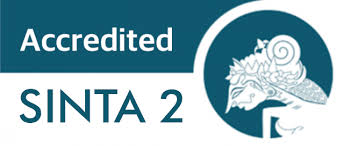Bint Al-Shati’ Critical Thematic Method and the Difference with Others
DOI:
https://doi.org/10.29240/alquds.v5i1.2610Keywords:
Bint al-Shaá¹i', interpreter qualifications, classical interpretation, modern interpretation, critical thematic method, literary analysisAbstract
Downloads
References
Al-Bab, Ja`far Dikk. “Al-Manhaj Al-Lughawi Fi Al-Kitab.†In Al-Kitab Wa Al-Qur’an Qira’ah Mu`asirah, edited by M Shahrur. Damaskus: al-Ahali, 1992.
Al-Farmawi, Abd al-Hayy. Al-Bidayah Fi Tafsir Al-Maudui. Cairo: al-Arabiyah, 1977.
Al-Ghazali, Muhammad. Nahw Tafsîr Maudûi Li Suwar Al-Qur’an Al-Karîm. Cairo: Dar al-Ma’arif, 1996.
Al-Haydari, Kamal. Usul Al-Tafsir Wa Al-Ta’wil. Edited by Abd al-Rida Al-Iftikhary. Teheran: Satarah, 2012.
Al-Razi, Fakhr al-Din. Al-Tafsîr Al-Kabîr. Beirut: Dar al-Hilal, 1976.
Al-Saá¹ibi, Ibn Musa. Al-Muwafaqat. Edited by Abd Al-Hamid. Cairo: Maktabah M Ali Sabih, 1969.
Al-Zamakhshari, Ibn Umar. Al-Kashshaf ’an Haqaiq Al-Tanzil Wa ’Uyun Al-Aqawil Fi Wujuh Al-Ta’wil. Beirut: Dar al-Kutub, n.d.
Amin, Muhammad. “A Study of Bint Al-Shati Exegesis.†McGill University, 1992.
Bint al-Shati’, Aishah Abd Rahman. Al-Qur’an Wa Al-Tafsir Al-Asry. Cairo: Dar al-Ma’arif, 1970.
———. Al-Tafsir Al-Bayani Li Al-Qu’an Al-Karim. I. Cairo: Dar al-Ma’arif, 1990.
———. Al-Tafsir Al-Bayani Lil Al-Qur’an Al-Karim. II. Cairo: Dar al-Ma’arif, 1968.
———. Maqâl Fi Al-Insân Dirâsah Qur’aniyah. Cairo: Dar al-Ma’arif, 1969.
Boullata, Issa J. “Modern Qur’anic Exegesis: A Study of Bint Al-Shati’s Method.†The Muslim World LXIV, no. 4 (1974): 103–13. https://doi.org/10.1111/j.1478-1913.1974.tb03145.x.
Denffer, Ahmad Von. Ulul Al-Qur’an: An Introduction to the Scoence of the Qur’an. London: The islamic Foundation, 2009.
Ismail, Maizul Imran &. “‘Āʼisha Bint Al-ShÄá¹i’s Thoughts On TarÄduf And Their Implications For The IstinbÄá¹ Of Law.†Al-Risalah 19, no. 2 (2019): 125–40. https://doi.org/10.30631/al-risalah.v19i2.459.
Izutsu, Toshihiko. Etika Bergama Dalam Al-Qur’an. Jakarta: Firdaus, 1993.
Jannah, Miftahul. “Manusia Dalam Al-Qur’an (Studi Atas Kitab Maqâl Fî Al-Insân: Dirâsah Qur’aniyyah Karya ‘Â’Isyah ‘Abd Al-Rahman Bint Al-Syathi’).†Ilmu Ushuluddin 16, no. 2 (2017): 81–94.
Kafrawi, Shalahudin. “Methods Of Interpreting The Qur’Än: A Comparison Of Sayyid Quá¹b And Bint Al-ShÄá¹i.†Islamic Studies 37, no. 1 (1998): 3–17.
Kumi, Ahmad al-Sayyid and Muhammad Yusuf Qasim. Al-Tafsir Al-Maudu`i Li Al-Qur’an Al-Karim. 1st ed. Cairo, 1982.
Mardan. “Tafsir Karya Aisyah Abd Al-Rahman Bint Al-Syathi (Suatu Rekonstruksi Metodologi Tafsir Kontemporer).†Jurnal Adabiyah XI, no. 2 (2011): 166–81.
MD, Jarot Wahyudi. “Literary Interpretation Of The Qur’Än: ‘FawÄá¹£il Al-Ä€yÄt,’ ‘Qasam’ And "IstifhÄm, ‘ Three Examples From Bint Al-ShÄá¹i’s ‘TafsÄ«r.’†Islamic Studies 37, no. 1 (1998): 19–28.
Mustaqim, Abdul. “Teori Hudûd Muhammad Syahrur Dan Kontribusinya Dalam Penafsiran Alquran.†Al-Quds Jurnal Studi Alquran Dan Hadis 1, no. 1 (2017): 1–26. https://doi.org/10.29240/alquds.v1i1.163.
Naguib, Shuruq. “Bint Al-Shati’’s Approach to Tafsir: An Egyptian Exegete’s Journey from Hermeneutics to Humanity (Review).†Journal of Qur’anic Studies 17, no. 1 (2015): 45–84. https://doi.org/10.3366/jqs.2015.0179.
Parninsih, Muhammad Alwi; Iin. “Menyoal Konsistensi Metode Penafsiran Bint Syathi Tentang Manusia (Studi Kitab Maqal Fi Al-InsÄn: Dirasah Qur’aniyyah).†Al-Bayan: Studi Al-Qur‟an DanTafsir 4, no. 2 (2019): 82–92.
Rahman, Fazlur. Major Themes of the Qur’an. Chicago: Bibliotheca Islamica, 1980.
Ramadhani, Wali. “Bintu Syati’ Dan Penafsirannya Terhadap Surah Al-‘Asr Dalam Kitab At-Tafsir Al-Bayani Lil Qur’anil Karim.†Jurnal At-Tibyan 3, no. 2 (2018): 265–81. https://doi.org/10.32505/tibyan.v3i2.717.
Roded, Ruth. “Bint Al-Shati’s Wives of the Prophet: Feminist or Feminine.†British Journal of Middle Eastern 33, no. 1 (2006): 51–66. https://doi.org/10.1080/13530190600603915.
Shahrur, Muhammad. Al-Kitab Wa Al-Qur’an Qira’ah Mu`asirah. Damaskus: al-Ahali, 1992.
Shaltut, Mahmud. Tafsir Al-Qur’an Al-Karîm. Cairo: Dar al-Qalam, n.d.
Shihab, Quraish. Membumikan Al-Qur’an. Bandung: Mizan, 1997.
Soleh, Achmad Khudori. Pemikiran Islam Kontemporer. Edited by Achmad Khudori Soleh. Yogyakarta: Jendela, 2003.
Syamsuddin, Sahiron. “An Examination of Bint Al-Shati"s Method of Interpreting the Qur’an.†McGill University, 1998.
Wahyuddin. “Corak Dan Metode Tafsir Bint Al-Shati’ Studi Atas Al-Tafsir Al-Bayaniy Li Al-Qur’an Al-Karim.†Epistemé 9, no. 1 (2014): 117–38.
Downloads
Published
How to Cite
Issue
Section
Citation Check
License
Authors who publish with AL QUDS : Jurnal Studi Alquran dan Hadis agree to the following terms:- Authors retain copyright and grant the journal right of first publication with the work simultaneously licensed under a Creative Commons Attribution-NonCommercial-ShareAlike 4.0 International License (CC BY-NC-SA 4.0) that allows others to share the work with an acknowledgment of the work's authorship and initial publication in this journal.
- Authors are able to enter into separate, additional contractual arrangements for the non-exclusive distribution of the journal's published version of the work (e.g., post it to an institutional repository or publish it in a book), with an acknowledgment of its initial publication in this journal.
- Authors are permitted and encouraged to post their work online (e.g., in institutional repositories or on their website) prior to and during the submission process, as it can lead to productive exchanges, as well as earlier and greater citation of published work (See The Effect of Open Access).









